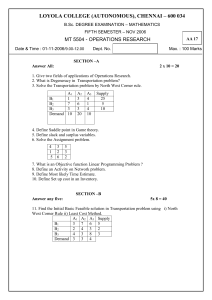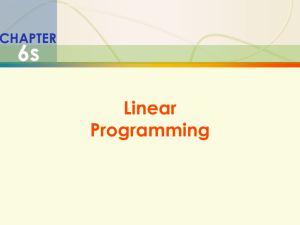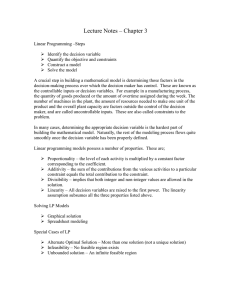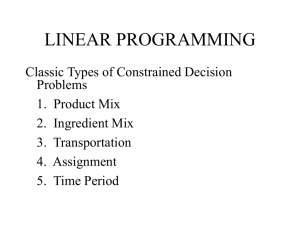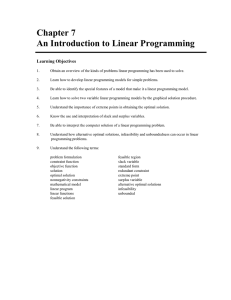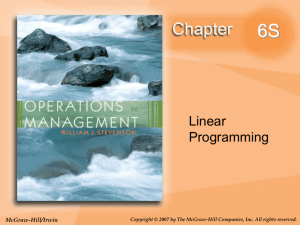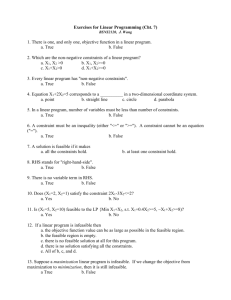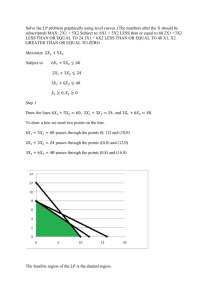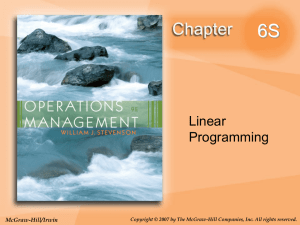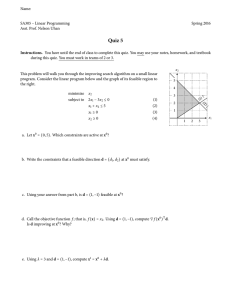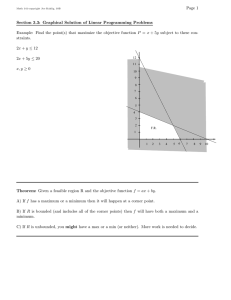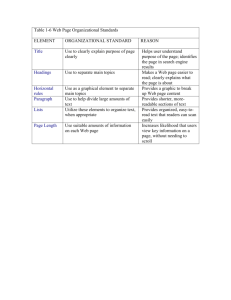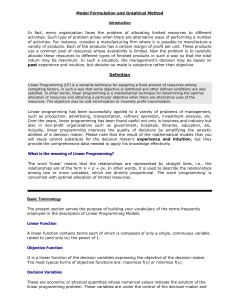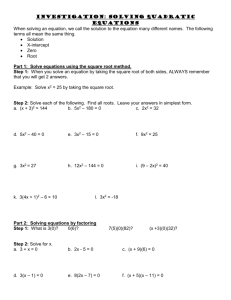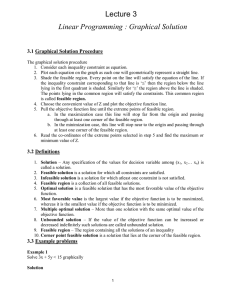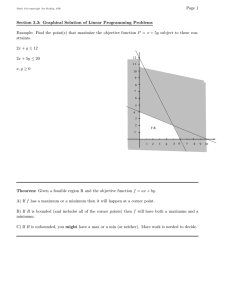Lesson 3: Graphical Solutions of Linear Programming Models
advertisement
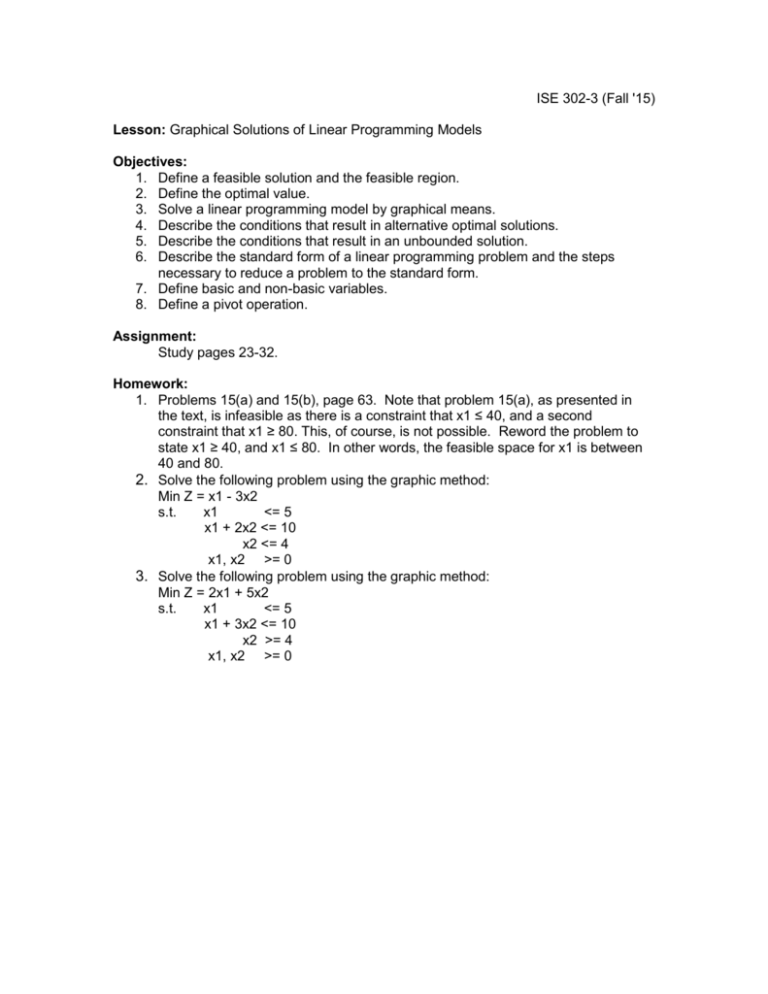
ISE 302-3 (Fall '15) Lesson: Graphical Solutions of Linear Programming Models Objectives: 1. Define a feasible solution and the feasible region. 2. Define the optimal value. 3. Solve a linear programming model by graphical means. 4. Describe the conditions that result in alternative optimal solutions. 5. Describe the conditions that result in an unbounded solution. 6. Describe the standard form of a linear programming problem and the steps necessary to reduce a problem to the standard form. 7. Define basic and non-basic variables. 8. Define a pivot operation. Assignment: Study pages 23-32. Homework: 1. Problems 15(a) and 15(b), page 63. Note that problem 15(a), as presented in the text, is infeasible as there is a constraint that x1 ≤ 40, and a second constraint that x1 ≥ 80. This, of course, is not possible. Reword the problem to state x1 ≥ 40, and x1 ≤ 80. In other words, the feasible space for x1 is between 40 and 80. 2. Solve the following problem using the graphic method: Min Z = x1 - 3x2 s.t. x1 <= 5 x1 + 2x2 <= 10 x2 <= 4 x1, x2 >= 0 3. Solve the following problem using the graphic method: Min Z = 2x1 + 5x2 s.t. x1 <= 5 x1 + 3x2 <= 10 x2 >= 4 x1, x2 >= 0



